Stretching from the Don River to Rouge National Urban Park, The Meadoway is a captivating greenspace connecting communities and natural areas by transforming 16 km of under-utilized hydro corridor.
The Meadoway showcases the harmony between urban development and environmental conservation, connecting ravines, parks, and neighbourhoods with diverse ecosystems, and offering a sanctuary for both wildlife and city dwellers.
As The Meadoway continues to grow and evolve, many different species are appearing and flourishing, finding a home in this newly created natural space.

The variety of species found in The Meadoway range from wildlife to pollinators to an abundance of native plants – all of which support and connect with one another, forming a rich, diverse ecosystem.
Many of the plants now established are host plants, meaning that they provide vital sources of food and habitat for different species, particularly those that migrate.
Here are just a few of the species that can now be found in The Meadoway:
American Lady
The American Lady butterfly is also known as the “painted beauty”. In the caterpillar stage, this species constructs nests on top of plants by spinning silky fibers.
You can identify the American Lady by the cobweb pattern on the lower side of the hind wing, and two large eye spots near the wing margin.
The American Lady’s appearance may change during the season: adults of this species appear larger and more vibrant early on, and paler as the season progresses.


Round-Headed Bush Clover
The Round-Headed Bush Clover reaches heights of up to four feet. It has numerous subtle yet delicately detailed white flowers that emerge in a swirling pattern along the top of its strong stem.
Run your hand along the stem and touch the leaves, and you’ll notice that they feel soft, like a cat’s tail.
This plant is extraordinarily valuable, providing benefits from top to bottom: its flowers attract bees and butterflies, while its leaves serve as food for various caterpillars. Mammals also find it tasty and nutritious, consuming it at different stages of growth. During fall and winter, its seeds become an important food source for birds as well.
As a member of the bean family, Round-Headed Bush Clover plays a crucial role in enriching the soil by cleansing nitrogen – a vital nutrient.
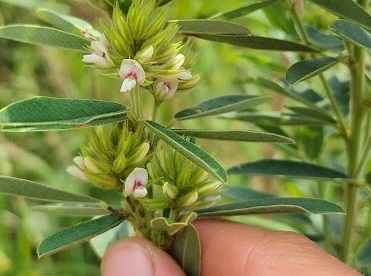
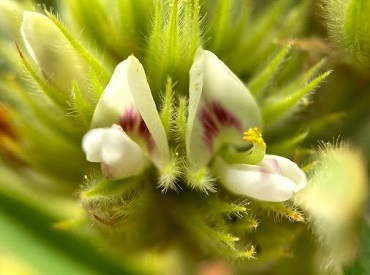
Aster Species
You can spot a variety of Asters in The Meadoway, but identifying each species requires careful observation.
These flowers have a yellow center resembling a bright sun, surrounded by delicate “petals” that beam out like sunrays. Interestingly, Asters are a combination of two types of flowers: the center is called a Disc flower, while the “petals” are known as Ray flowers.
Asters bloom during late summer, producing vibrant colour well into the fall. Their late bloom period is particularly important because they serve as a crucial source of food and shelter for many birds, small animals, butterflies, moths, and other pollinators.
Even during the cold season, the dried stalks of Asters offer a safe over-wintering habitat for our essential pollinators.


Black Swallowtail
The Black Swallowtail butterfly is finding a home in The Meadoway – particularly in open areas of fields, meadows, and prairie landscapes.
There are notable visual differences between adult females and males of this species. Females have bluer colouring and less yellow on the upper surface of their wings, while males display more yellow than blue.

Black Swallowtail female

Black Swallowtail male
The Black Swallowtail uses mimicry as a defense mechanism: the underside of its wings resemble those of the Pipevine Swallowtail, a species poisonous and distasteful to predators.
In its caterpillar stage, the Black Swallowtail has a vibrant colour pattern consisting of black bands and yellow spots. This colouration blends in easily with sun-dappled host plants, making the species difficult to spot in its natural habitat.

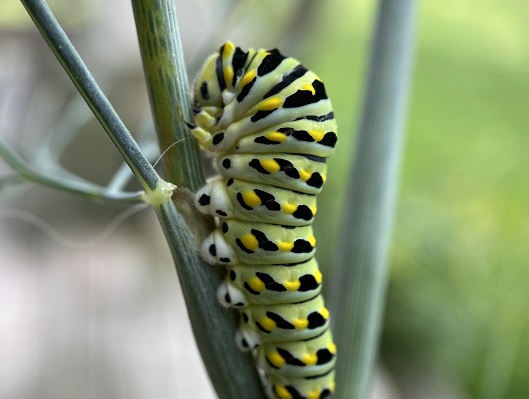
Black Swallowtail caterpillar
Wild Bergamot
The Wild Bergamot is a distinctive flower belonging to the mint family. The petals are tubular in shape, making them perfect drinking vessels for butterflies and hummingbirds that enjoy sipping on nectar.
If you’re a fan of herbal teas, you may also notice a familiar fragrance emanating from the leaves of this plant: a captivating aroma reminiscent of Bergamot orange tea!
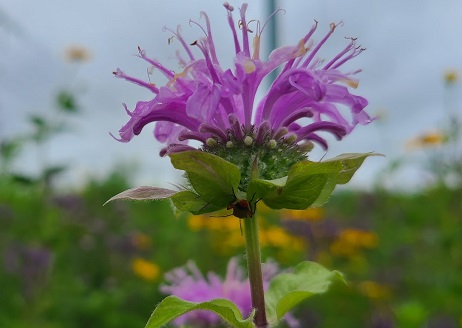
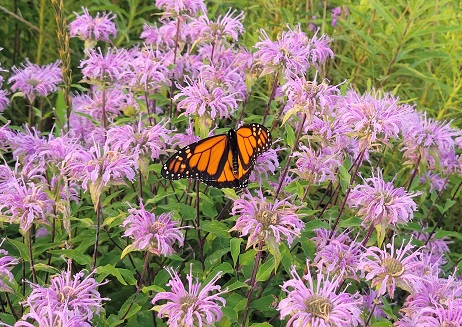
Transforming the mowed grass of a hydro corridor into native meadow has brought a wide variety of flora and fauna back to this natural space. The Meadoway now helps to support a a growing diversity of species while offering residents a unique opportunity to connect with nature in their own community.
Looking to visit The Meadoway? Check out the Public Access Map to plan your experience.
Are you interested in helping to bring nature back into city living? You can support The Meadoway through Toronto and Region Conservation Foundation. LEARN MORE.
